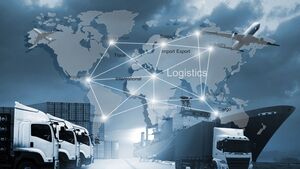Real-Time Marine Tracking: What You Should Know
Body
Real-time marine tracking is the silent engine that powers the maritime world. It moves ships, cargo, and supply chains across invisible sea lanes. With trade growing faster than ever, tracking technology ensures that nothing falls through the cracks. It's how the modern ocean breathes steady, monitored, and precise.
What Is Real-Time Marine Tracking?
Real-time marine tracking refers to continuously monitoring vessels on the ocean using a network of digital tools. It lets stakeholders know the precise location, speed, and status of ships at any given moment. Unlike older systems that provide delayed updates, real-time tracking is about immediacy and precision. It transforms maritime navigation into a transparent and data-rich operation.
The Technology Behind Real-Time Tracking
This high-tech surveillance relies on a layered approach. It combines GPS, AIS (Automatic Identification System), radar, terrestrial antennas, and satellite systems. Each component brings a different piece of the puzzle: location, speed, identification, and data transmission. When woven together, they deliver a full-spectrum view of the maritime domain.
The Role of AIS and GPS in Vessel Monitoring
AIS acts like a vessel's digital voice, broadcasting identity and location and heading to nearby ships and monitoring stations. GPS, meanwhile, offers geolocation coordinates with high accuracy using satellite triangulation. Together, they form the backbone of real-time vessel awareness, reducing collision risks and ensuring compliance with international maritime law.
Satellite Tracking: Expanding the Horizon
Coastal tracking systems have limitations, mainly in terms of distance. Satellite AIS extends this coverage beyond shorelines, capturing vessel data even in the remotest oceans. This capability is critical for monitoring deep-sea voyages, tracking illegal fishing, and responding to emergencies in vast maritime zones. It's oceanic oversight without borders.
Why Real-Time Data Matters in Maritime Operations
Regarding maritime logistics, time isn't just money. It's everything. Real-time data ensures ships are where they are supposed to be when they're supposed to be. It enables instant rerouting, faster customs processing, and better inventory control. In today's just-in-time supply chain world, any delay can ripple globally.
Applications in Commercial Shipping and Logistics
Shipping lines use real-time tracking to streamline fleet coordination and improve route efficiency. Logistics firms rely on it for accurate ETAs and to reduce port dwell times. Cargo owners use the data to plan warehousing and trucking logistics. It transforms complex operations into synchronized movements.
Safety, Compliance, and Environmental Monitoring
Tracking vessels isn't just about convenience. It's about accountability. Real-time data ensures ships follow designated routes, comply with emission control zones, and avoid restricted or ecologically sensitive areas. In case of onboard accidents or oil spills, it provides immediate situational data for emergency responders.
Challenges in Accuracy and Data Integrity
Marine tracking isn't foolproof. Intermittent satellite coverage, system malfunctions, and adverse weather can affect the flow or accuracy of data. Additionally, manual AIS entry can result in false data, whether it is due to error or intent. Data integrity remains an ongoing technical and ethical challenge in maritime tech.
Cybersecurity Threats in Marine Tracking
As systems go digital, they also become vulnerable. Hackers can spoof AIS signals, manipulate GPS routes, or gain access to sensitive ship data. Maritime cybersecurity has become a top priority against these silent, digital attacks. Robust encryption and regular audits are no longer optional; they're essential.
Integration with Port Management Systems
Ports don't wait for ships. They plan for them in real-time. Marine tracking data feeds directly into port management platforms, allowing for better scheduling, berth allocation, and cargo handling. This integration accelerates port turnaround, reduces demurrage costs, and minimizes environmental impact.
The Role of AI in Predictive Marine Tracking
Artificial Intelligence is changing the way vessels are monitored. Predictive models can forecast vessel behavior, estimate arrival times, detect deviations from expected routes, and suggest fuel-optimized courses, like having a virtual first mate constantly analyzing oceanic patterns for efficiency.
Benefits for Fleet Owners and Operators
Real-time marine tracking helps ship owners cut costs by reducing idle time, fuel waste, and unnecessary detours. It enhances asset utilization, improves safety compliance, and increases transparency for clients and insurers. Ultimately, it provides a competitive edge in a fiercely dynamic shipping industry.
Consumer-Facing Applications: From Cruise Ships to Fishing
Even consumers benefit from this technology. Cruise passengers enjoy real-time itinerary updates, while recreational boaters can share locations with loved ones. Fishing vessels can track migration patterns and avoid restricted zones. Real-time tracking empowers everyday users, not just large shipping giants.
Future Trends and Innovations in Marine Surveillance
Expect a wave of innovation from blockchain-based tracking for cargo authenticity to drone-assisted marine monitoring. 5G and edge computing will reduce latency, making tracking faster and more accurate. The future of marine tracking is bright, decentralized, and ultra-connected, reshaping how we perceive maritime mobility.
Staying Afloat in the Digital Age
Real-time marine tracking has turned the ocean into a digitally mapped frontier. With every ship accounted for and every route traceable, the maritime industry is more efficient, safer, and responsive than ever before. As technology evolves, so will our mastery over the seas, one data point at a time.
FAQs
1. What is real-time marine tracking?
It's a system that continuously monitorships' exact position and movements using digital technologies.
2. What are the primary tools used in marine tracking?
AIS, GPS, radar, and satellites provide accurate real-time data.
3. Can ships be tracked in remote ocean areas?
Yes, with Satellite AIS, tracking extends to even the most isolated marine zones.
4. Why is marine tracking important for safety?
It prevents collisions, enables quick response to emergencies, and ensures compliance with safety regulations.
5. Is marine tracking data vulnerable to cyberattacks?
Yes, systems can be hacked or manipulated without proper cybersecurity, posing serious risks.








Comments